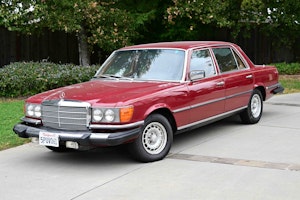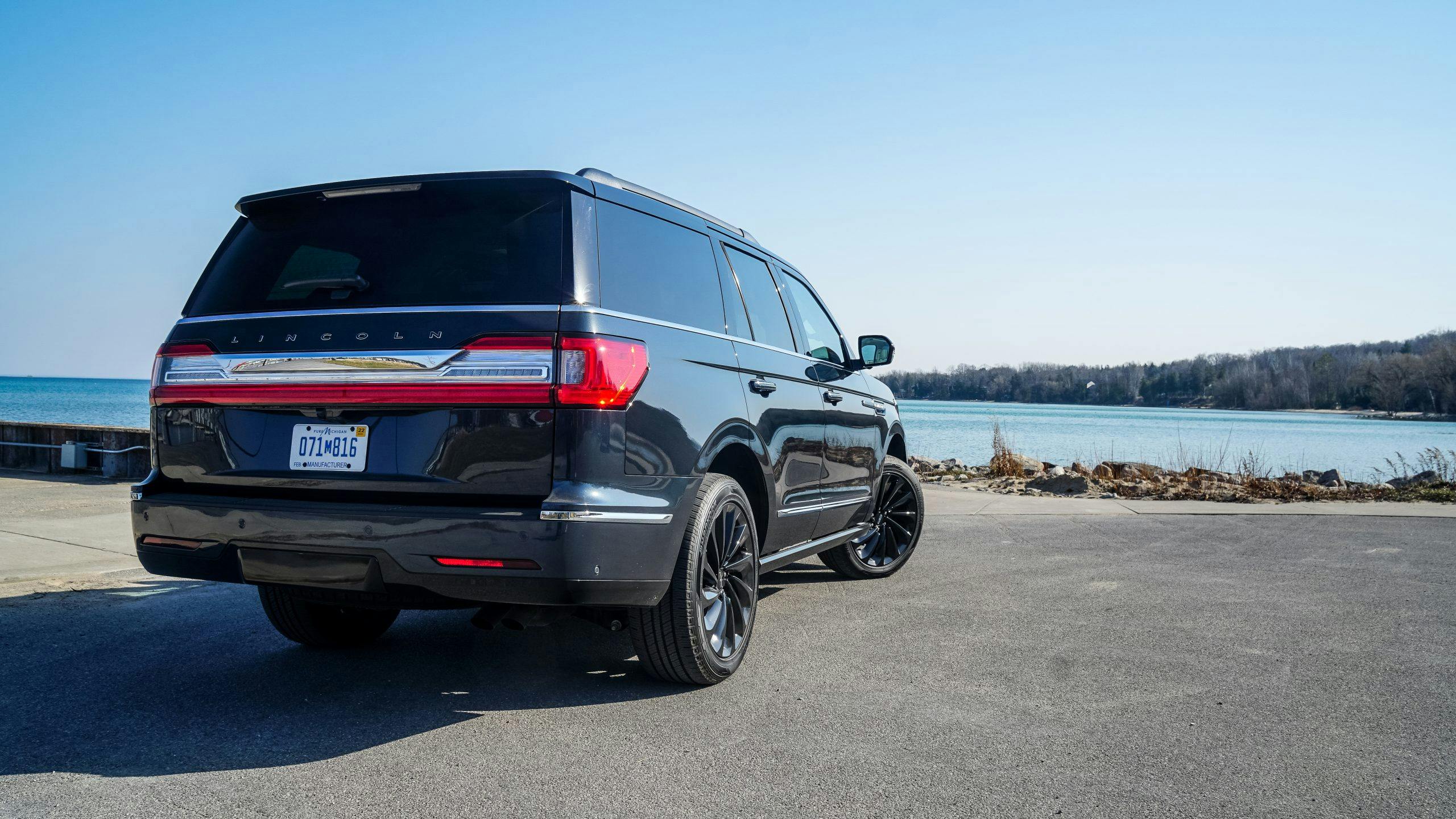Media | Articles
Review: 2021 Lincoln Navigator 4×4 Black Label
Since 1998, one name has remained steadfast in Lincoln’s product lineup: Navigator. Is it a luxury truck with a long roof? A rolling couch? However you slice it, the SUV responsible for kicking off an American full-size luxury SUV arms race has, throughout its lifetime, often felt like little more than a thin veneer of luxury over the more everyman Ford Expedition body. That all changed in 2018. Lincoln stepped up its game with the fourth-generation Navigator by taking the world-class interior design philosophy that debuted on the Continental sedan and applying it to the modern-day luxobarge: the big-box SUV. Still, Navigator sales remain well shy of its crosstown rival, the Escalade.
Context is key, so let’s reacquaint ourselves with the current competition, namely the two stalwarts from The General. You know them well: GMC’s Yukon (specifically the Denali trim) and as previously mentioned, Cadillac’s beloved Escalade, long the sales king of the segment. Each is brand-new within the last year, riding on a new frame headlined by the addition of—at long last—independent rear suspension. Since 2005, the Escalade has outsold the Navigator every year on the trot, often times at a two-to-one pace. The debut of the fourth-generation Navigator seems to have drawn Lincoln no closer to that top step, selling 18,656 in its best year (2019) while the Escalade moved nearly twice that volume—35,424—in that same time period. Despite the three-year head start, the Navigator is somehow still playing catch-up. What gives?
To find out, we flung around Michigan’s lower peninsula in a decked-out Navigator. Our $106,115 tester was a top-trim Black Label machine, laden with all the features that lesser trims—Standard and Reserve—have to tack on piecemeal. To the Black Label’s $99,420 base price (including $1295 destination fee), just one package was added: The Special Edition Package, new for 2021. For $6695, you get a black roof, black grille, black sideview mirror caps, and—well you get the point. Black rooflines are certainly trendy right now, but we prefer a single color for body and roof—this test vehicle’s Flight Blue especially.
Two-tone look aside, the Navigator is a remarkably handsome freight car, especially stacked up against the Yukon and Escalade. The Denali expresses luxury in the form of a biker gang’s worth of chrome slapped onto the front end. The Escalade is not much different, aside from its sharper, more squared-off lines. The Navigator’s softer front end still carries plenty of visual gravitas, but the effect is much less ostentatious. The rest of the exterior follows its cues from the front end: strong horizontal lines but nothing too angular. There are echoes of the Ford Expedition with which it shares a roofline and second-row door, but nothing that would offend someone dashing off a hefty down payment. The whole business rides on Ford’s T3 platform and boasts independent rear suspension, which the GM siblings received just last year.
The interior is all-world great, one of the few truly lavish cabins to come from an American marque in recent years. Most notable is the manner in which Lincoln invites customers to choose details. Our tester wore the Chalet theme, one of three atmospheric flavors offered to Black Label buyers (Yacht Club and Destination being the other two.) Pick Chalet and you’ll get special Alpine Venetian leather seats, a matching creamy suede headliner, Silverwood interior accents, and plush carpeting thick enough to backstroke through. The Navigator may fall short on tech, especially in light of the Escalade’s dazzling 38 inches of OLED screen, but Cadillac’s commodities-grade plastic below knee-level is nowhere to be found in the big Lincoln. Plushness trumps pixels.
Marketplace
Buy and sell classics with confidence


In that same vein, the Navigator’s familiar controls just plain work. It’s hard to overstate how much more satisfying and straightforward it is to shift the Lincoln into gear, compared to the Escalade’s bulbous console-mounted joystick. The Navigator’s four push tabs—P, R, N, D—slot perfectly into the horizontal line spanning the lower half of the dashboard. Lincoln calls it a “piano key shifter,” and it’s easy to see why; getting a move on is as simple as striking middle C on a Steinway. Then there’s the seats; 30-way adjustable seats can feel like paralysis by analysis at first, but once you set your memory settings the deed is done and the “Perfect Position” nickname feels earned. Second-row seating is passable for teenage kids and dinner companions alike, and the third row offers an impressive 42.3 inches of legroom against the Escalade’s 34.9. Our tester lacked both the optional second-row center console (a no-cost option) and the rear-seat entertainment screens, a $2000 option.
FoMoCo’s 3.5-liter EcoBoost twin-turbo V-6 is the only engine available—the same boost-huffer the high-flying Ford Raptor uses. It’s good for 450 horsepower and 510 lb-ft of torque in the Navigator, pairs with the 10-speed automatic transmission that Ford and GM co-developed, and, in the case of our tester, has the ability to send power to all four wheels via a 4×4 system with a two-speed transfer case.
About that engine. The V-6 feels punchier than GM’s V-8 when you dig in the spurs, but we couldn’t help but notice how loud the Navigator is at idle. Compare that to the Denali, which your humble author once tried to remote start while it was already running. The Navigator is audible 20 yards away, well after the catalytic converters are up to temperature. Impressive as it is for the Navigator to share its engine with the Raptor, we prefer the refined patience of GM’s pushrod V-8 to the EcoBoost’s raw pace.
Stopping is an altogether different matter. The Lincoln’s brake tuning is expert; effort is well-weighted and feels natural for around-town driving as well as highway trips. Ever eased a Denali down from a seemingly lazy speed and had to suddenly stomp the left pedal to avoid thumping the Kia Forte in front of you? A distant memory from the driver’s seat of the poised Navigator.
The Lincoln’s edge in this two-decade-old SUV fight has long been its gorgeous, cumulus-like ride quality, courtesy of an independent rear suspension that hit streets for 2003. All it took for GM to flip the script was to upgrade the Escalade and Denali with an IRS of their own, plus a cushy Air Ride setup. All three SUVs are superb on smooth roads, but the coil-sprung Navigator wiggles and shimmies over uneven pavement that the latest air-suspended GM trucks wouldn’t even register. (Fly as they look, 22-inch wheels don’t help here.)
The other American offerings would have you believe that the luxury metric of the future is square inches of screen. Whether they’re correct remains to be seen, but in this department the Lincoln’s SYNC 3 system shows its age. The screen is slow to wake up when the car starts and a little delayed with touch inputs at times. Its saving grace is a 20-speaker Revel Ultima sound system that envelops the cabin in rich sound. Center stage seems to be directly atop the center console, and everything from Toots and the Maytals to Avicii to Rachmaninov comes through with utmost clarity. HVAC and seat controls are completely button-driven, although there are ways to access both through the touchscreen. Lincoln’s adaptive cruise is stellar, and the lane keep assist tech is plenty good. Cadillac’s semi-autonomous SuperCruise system is already in play, but expect Ford’s recently-unveiled BlueCruise hands-free highway driving tech to find its way onto the Navigator soon; it’s headed first for the F-150, which will prove that it can handle a big body-on-frame application. In the meantime, expect SYNC woes—both size and speed—to be remedied with a Navigator model refresh in the coming months.
Lincoln says that a large portion of its clients are purchasing the higher-spec Reserve and Black Label Navigators. It’s not hard to see why. Opting for the upper crust standardizes niceties such as a massive panoramic sunroof, 360-degree camera views for parking in tight spots, and adaptive cruise control. Discerning buyers will be satisfied plunking down $91,740 for a Navigator Reserve replete with baked-in goodies like premium paint, the Reserve I package (netting a heads-up display and illuminated grille emblem, usually $1275) a $690 heavy-duty trailer tow package, and the $2500 Luxury package (adds the 30-way adjustable seats and the 20-speaker Revel Ultima sound system). Once any other options inch the list price up near six figures, the Black Label starting at $98,125 looks a whole lot more appealing. And in this segment, the whole point is to roll around in ultimate bliss, right?
If you’re considering jumping from a big European luxury SUV to an American offering, the Navigator will feel like the most natural transition. Its interior is genuinely comparable to the likes of Mercedes-Benz and BMW, particularly in the Black Label trim. The driving experience is most similar as well, with a turbocharged engine and tight—but not punishing—suspension. Were Lincoln to replace the Navigator’s EcoBoost six with a big natural-breathing V-8, the end result would be more on par with the offerings from GM, which might be a key step to toppling the Escalade’s reign of supremacy. Of course, sheer brand and marque equity play a role here, and the Escalade benefits from years of hard-fought cachet during which Lincoln was out to lunch. With Jeep’s Grand Wagoneer on the horizon, the latest Navigator’s uphill battle isn’t going to get any easier, but—finally—it’s not for lack of trying.
2021 Lincoln Navigator 4×4 Black Label
Base Price/as tested: $77,480/$106,115
Highs: Best interior and exterior design of any body-on-frame luxury SUV, hands down. Concert hall-caliber sound system. Masterful seats.
Lows: Engine that should be more refined in sound and character. Unimpressive screen, if that’s what you’re into.
Summary: Old-world luxury feel that does the American tradition proud, but the Navigator is a V-8 away from segment mastery.




























































